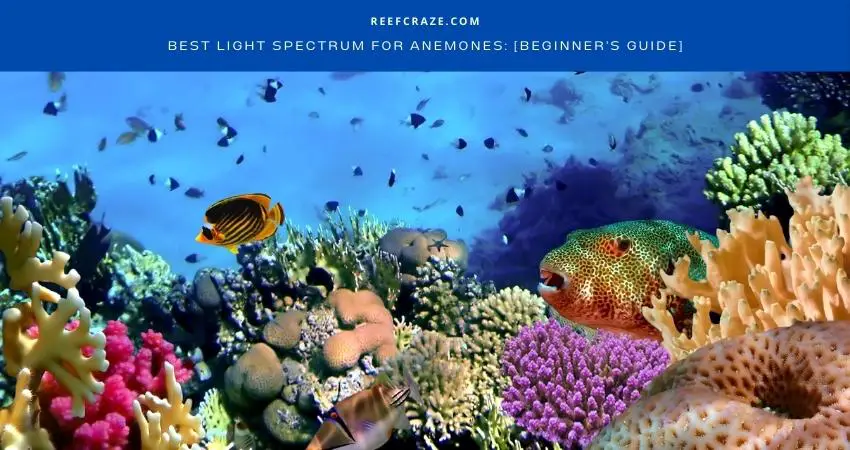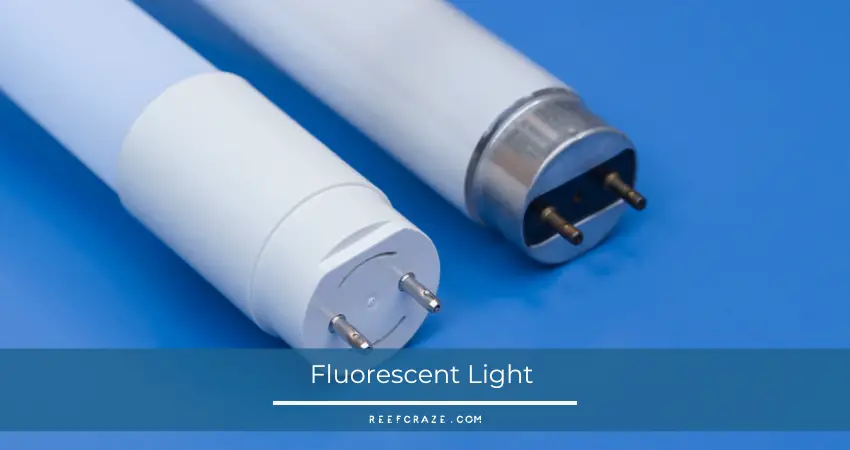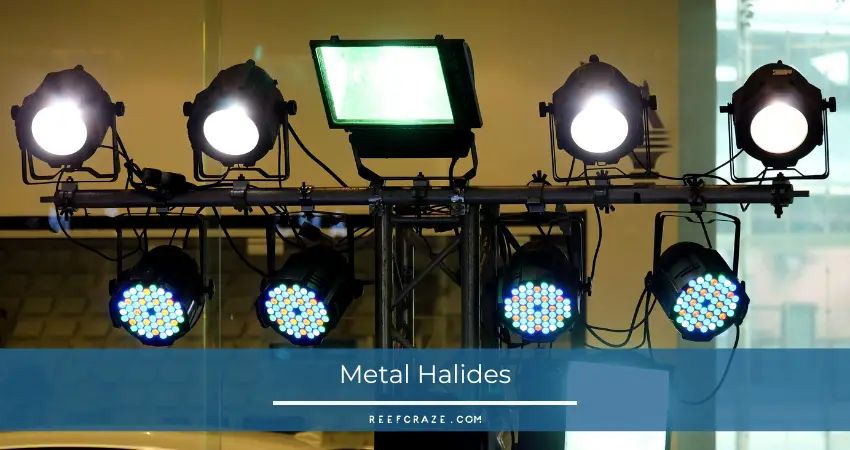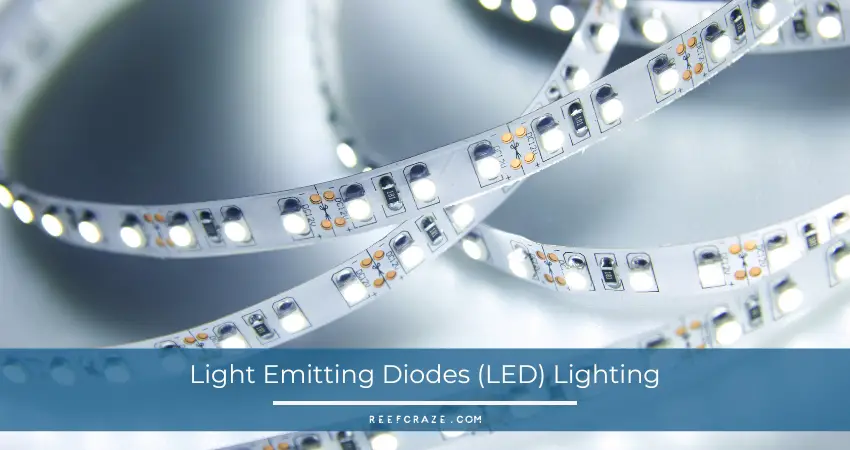One perk of having corals and sea anemones together is their requirement for similar lighting. They both host algae called zooxanthellae in their cells to provide them with energy for nitrogen and carbon. That is why you need to arrange powerful lighting to enable them to support their algae friends.
The best light spectrum for anemones falls between 10,000K and 20,000K. You can arrange it by using a PC, LED lighting, a VHO set, metal halides, T5 fluorescent bulbs, etc. These high-output lighting arrangements help improve their color and health.
I will introduce the best lighting arrangement for anemones to you today. Once you learn about it, you will know how to give the best to your pets.
Anemone Light Requirements
Power Compact, VHO, Metal Halide, NO, LED, and T5HO are the lighting systems most used for anemones. Which light you choose varies within the invertebrate type and your aquarium size. Besides, you will also have to consider the correct light intensity and the best light spectrum for anemones.
Take into account the water depth and clarity your anemones came from while setting up your reef tank. The deeper the water, the bluer the light spectrum that used to reach them in their natural environment.
Because the water scatters selectively, absorbing specific wavelengths of the visible part of the light. Longer spectrum wavelengths like orange, yellow, and red can access 49 ft. to 164 ft., where red is the first to be filtered out, and orange is the last.
Short wavelengths like blue, green, and violet will penetrate further. Since blue reaches the furthest, clean tropical water and seawater are mostly blue.

The water clarity also matters here. The clearer the water is, the fewer materials are in it to block the light transmission. That has something to do with controlling the colors.
Coastal areas that are shallow possess more particles in their water, which absorb or scatter the light wavelengths, making the water appear more brown or green.
So, it bodes well for you if you have the knowledge of the spectrum and intensity of the past environment of your anemones. It will enable you to fix your aquarium lighting according to the needs of your anemones.
From the experiences of many reefers, the best light spectrum for anemones is between 10,000K and 20,000K, which is pretty much similar for corals. It stays below 10,000K for algae.
Now let me tell you how to get the best light spectrum for your anemones with the lighting systems I mentioned at the beginning of this section.
Fluorescent Lighting
1. Regular Fluorescent with Normal Output (NO)

It is the basic lighting type with normal output. Most starter aquariums come with it.
It provides 3,000 Kelvin to 10,000 Kelvin. You will find it the cheapest in the market. However, I would not advise you to use it for your anemones. It gives the best result only for small tanks.
2. Compact Fluorescent
It is the advanced version of regular fluorescent bulbs, typically ranging from 10W to 100W with a 5,000-degree to 10,000-degree Kelvin rating. It will provide a brighter light while putting off heat that may increase the aquarium’s water temperature.
3. Very High-Output (VHO) Fluorescent
VHO ranges from 75w to 160w, with Kelvin ratings between 10,000-degree and 20,000-degree. They come at a high price and produce higher heat than the normal ones.
You can use it for your reef tank, but you have to place the anemones requiring brighter light near the top region. Also, a VHO set cannot penetrate well in deeper tanks and may be insufficient for anemones needing highly bright light to survive and grow.
4. T5 High-Output (HO) Fluorescent
Ranging from 20 watts and 80 watts with 6,000K to 11,000K, this light is costlier and needs a fan to stop it from overheating (and shortening its lifespan).
However, users usually have great experiences with it in medium-sized aquariums. Sea anemones, demanding brighter light, grow well under this lighting arrangement. Moreover, it can also provide adequate light for low light anemones by accessing the bottom region.
Metal Halides

The usual watt limit of a metal halide lamp is between 150 and 1500. The Kelvin ratings start from 3500° and go as high as 20,000°.
Therefore, it is capable of producing an ample amount of heat. But you have to use a fan to cool it, depending on where the aquarium stands from the bulb wattage.
Users should be cautious while arranging this lighting with acrylic reef tanks. The reason is the chance of UV rays and heat cracking your aquarium.
I vouch for metal halides more than I do for the others because they can access the lowest part of almost any reef tank. Furthermore, while providing the perfect light for any anemone, it will also offer you a variety of light spectrums.
Light Emitting Diodes (LED) Lighting

The lights are available with a Kelvin rating starting from 6,500 and limited to 22,000. It consumes much lower energy than a metal halide lamp.
What makes LED lights more effective than others is their longer life and lower heat output. Nonetheless, the price is high.
Besides, you will get a narrow light spread from it, raising the necessity for more lights with similar coverage. You have to prioritize this factor while placing an anemone in your aquarium to give it sufficient brightness.
Frequently Asked Questions
Should I Keep The Lights On During The Night For Anemones?
No. Anemones do not need lights during the night. Still, if you want certain anemones to spawn, it would require you to create an environment mimicking the moon phase.
How Long Should I Keep The Lights On For My Anemones?
6 to 8 hours is fine. But if you have corals, increase it to 9 to 12 hours.
Does An Anemone Need Blue Or White Light?
Zooxanthellae use different spectrums in the ranges of blue, green, and violet, but the least in red. Most of them should do well with blue light only. But using white light makes them look more colorful.
Can An Anemone Survive When There Is Low Light?
You can get Rock Flower Anemones and Condylactis Anemones if you are adamant about the lighting. They adjust well to lower lighting better than others.
Final Words
The best light spectrum for anemones is achievable through a number of options I discussed today. You should research your desired anemone type, see its demands and precise lighting condition, and go about it accordingly.
Remember to be attentive to the details because anemones are vulnerable, even to the slightest changes. The more you emphasize their maintenance, the healthier they will be.
Good wishes!
